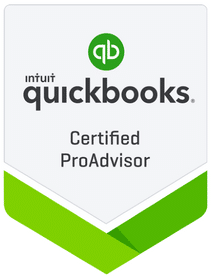- Patrick Roney
- (877) 503-8607
Follow Us :
Follow Us :
Proledge
March 4, 2011

Scanners have two broad applications: scanning documents and scanning pictures. This being a bookkeeping blog, the focus will be on document management. Paperless is the word of the day and scanners are becoming an increasingly important tool in most businesses, whether your objective is to distribute information more effectively (e.g. emailing documents to your bookkeeper) or you are trying to get rid of paper. Scanners come in all sorts of formats, speed, quality, sizes and prices. If you need to scan more than a few pages a month, it is worth putting some thoughts into the selection of your scanner.
Most multi-function printers (MFPs) come with a flat-bed scanner. This is a no-brainer. Every office should have at least one flatbed scanner, because they are the most versatile and cost effective. Those are the scanners with which you lift a hood, put the paper flat on the glass, close the hood and scan. The problem with those scanners is that they are very slow. The process of positioning the document to be scanned is slow in itself, but once you press the button, the scan is slow because there are a lot of moving parts. Most MFPs are now coming with a sheet-feeder to speed up the process. This is a must. Make sure not to buy an MFP without that sheet-feeder. However, these sheet feeders are very limited in scope. They work well for documents in letter format, but if you have smaller documents such as receipts, they jam way too easily. Furthermore, they scan only on one side of the page at the time. That’s when having a sheet-fed dedicated scanner starts making sense. Those are the scanners that are typically upright and into which you can feed 50 to 100 pages at once. I’ll expand a bit on the dedicated sheet-fed scanners below, but my recommendation is that most businesses should own a dedicated sheet-fed scanner in addition to the flatbed that comes with their multi-function printer.
One of the benefits of dedicated sheet-fed scanners is that they can scan both sides of a page at once. This is a huge time saving if you have a two-side documents with many pages. Luckily, it has become pretty much standard on all dedicated sheet-fed scanners. Shy away from one-sided scanners.
If your goal is to scan pictures, quality is very important. If your goal is to scan documents, quality is no longer an issue, because all scanners on the market now exceed the minimum quality requirements for documents. For most applications, you don’t even need to scan your documents in color, at more than 300 DPI. It simply takes too much space on your hard drive and it doesn’t materially improve the clarity of the document. For most business documents, black & white (not even grayscale) at 200 DPI is good enough and it makes for very small files that are easy to email around.
This is one criteria often overlooked when selecting a scanner. Most scanners will take any paper format up to legal format. The big difference between scanners is whether you can mix the paper format in the same stack of paper. Many scanners will require you to scan documents of different sizes in different batches. This is very time consuming. Make sure to select a scanner whose software accepts small receipts, large receipts, letter format, half pages, etc.. all in the same stack and the same batch.
As I mentioned earlier, if you have have quite a bit of scanning to do, a dedicated sheet-fed scanner is a lot faster and a necessity. However, within sheet-fed scanners, speed varies significantly. Unless you have a very high volume of documents to scan, speed should not be an important criteria for you. It will save you money, because speed comes at a hefty price. Most dedicated sheet-fed scanners are now fast enough.
The software that comes with your printer can make the whole difference between a smooth process and a very frustrating experience. A good piece of hardware is worthless with bad software. All scanners come with some software. Sometimes, in the box, there will be the “light” version of the software and a more advanced one. Don’t take shortcuts. Install the best software that comes with your printer. It will make a huge difference in efficiencies.
If the software doesn’t allow you to scan documents directly to PDF, return the scanner asap! Scanning to PDFs is a must. Scanning a 5 page documents as 5 JPEGs or GIFs in 5 separate files and emailing them to a client or partner is nowadays considered rude. At a minimum, it is cruel.
If you are reasonably technically sophisticated, also make sure that the scanner is TWAIN compatible. It ensures that your scanner can talk to other software applications. If it is not TWAIN compatible, you’ll be hostage to the software that comes with your scanner, which is not always ideal. Hardware manufacturers are seldom good software developers.


Fill out the form below to sign up to our Blog Newsletter and we’ll drop you a line when new articles come up.
Bookkeepers.
Professional. Affordable.
ProLedge is a bookkeeping services firm.
Copyright © 2024 All rights reserved.